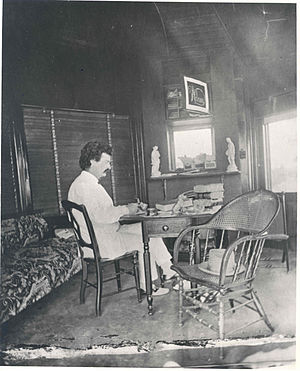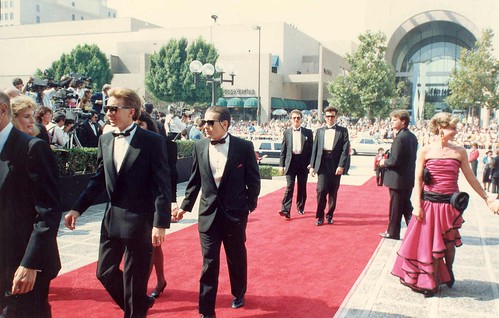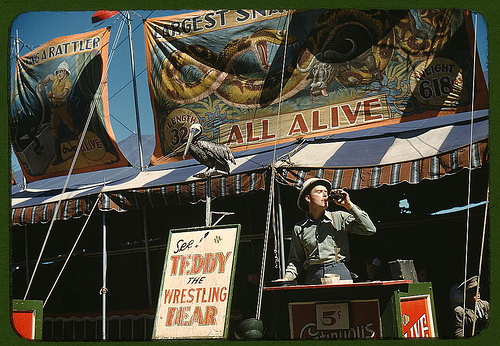Q & A Series: Camille Ryan
/Welcome to the Q&A series, a project aimed at examining food politics and the “food debate” through the eyes and minds of people involved in making and thinking about food. My questions are in bold; the interviewee’s responses are in plain text. Today's guest is Camille Ryan.
____________________
Cami Ryan is an outspoken advocate for agriculture, science and consumers, and has worked in agriculture for over 20 years. She critically investigates anti-science movements and how special interest groups develop campaigns to attack specific issues. In particular, she explores the role of social media tools (Twitter, Facebook, etc.) as platforms for launching anti-science campaigns.
She is a Professional Research Associate with the University of Saskatchewan (Canada), and has a bachelor’s degree in commerce (biotechnology management) and a Ph.D. in Interdisciplinary Studies (agricultural economics, business and sociology). She has published in both scholarly and mainstream publications. Her personal website is http://doccamiryan.wordpress.com/
Courtesy of Camille Ryan
Q.: Tell us laypeople what you do (emphasis here on us being laypeople!). Are you a scientist or a science translator? Or neither? Bare minimum, you’ve got kind of an oddball job.
A.: Oddball is a bit of an understatement. There are not too many people in my line of work (academia) applying their knowledge in this way. I am a “social scientist.” That’s a branch of academic study that involves any one of a number of disciplines, such as economics, sociology, political sciences, or anthropology (and more).
As a social scientist, I am interested in the relationship between individuals and society. Science is an important part of the social fabric of society. So I want to understand how people relate to or understand science, the sources through which they get their scientific information and what and how things get communicated about science.
Courtesy The Commons, Flickr
In particular, I’m interested in how people view agricultural sciences. Most of my academic research focuses on understanding innovation in agriculture and public perceptions of agricultural sciences, and in evaluating networks of anti-science activists. All of this seems to flow into studies in science communication.
In my “online” life, I work to address misinformation that circulates about science, agriculture and farming. I want to ensure that consumers have the most up-to-date, accurate information so that they can make informed choices about what they eat.
Q.: You started your career more than two decades ago, before the ‘net, web, and social media arrived in our lives. As a former academic myself, I’m guessing that from about 1995 on, digitization wreaked havoc with your intellectual life and labor. How did the arrival of net/web/social media change your views about how information spreads?
A.: The Internet and social media have undoubtedly changed human interaction and communication – both for the good and the bad. We are a highly mobile society and we are wholly “tapped in” to mobile devices. Collectively, we are what the Pew Institute refers to as ‘just in time’ users. If we have a question we want answered, we Google it. If we have a problem to solve, we Google it. Information is, quite literally, at our fingertips.
And that can be good thing. However, social media and those related platforms can be used (intentionally or unintentionally) as destructive tools as well.

What did Mark Twain say? “A lie can travel halfway around the world while the truth is still putting on its shoes.” Information can circulate like wildfire, but that information isn’t always accurate. In fact, in the context of agriculture and science (i.e. genetic engineering, GMOs, etc.), it is often inflammatory.
In order for people to make informed decisions about agriculture and food production and what they consume, they need access to accurate information. In this world of instant information, it can be pretty difficult to separate the "wheat from the chaff.”
Q.: I’m bugged to bits by nonsense, especially when it comes to food and food making. But I’m both baffled and fascinated by the way misinformation (aka nonsense) takes on a life of its own. Have you been able to track a specific piece of inaccuracy to its source? (Sort of like finding the headwaters of the Nile.) Does “source” even matter?
A.: There are so many examples of "nonsense" out there ("myths" as I view them). Do I have a ‘favorite’? Sure. The “Frankenfood” myth is an interesting one.
Paul Lewis (Professor of English at Boston College, Massachusetts) (let’s call him “the source”) is often credited with coining the term. Lewis wrote a letter to the New York Times in June of 1992 in response to the USDA’s decision to allow companies to market genetically modified food. In that letter Lewis stated:
“If they want to sell us Frankenfood, perhaps it's time to gather the villagers, light some torches and head to the castle.”
Human beings think in pictures and, in times of uncertainty, we like to cling to myths and metaphors as a way of dealing with that uncertainty. It is the way we humans adapt to change. This is why the term ‘Frankenfood’ is so incredibly powerful and visually provocative and why it is so widely used in memes and in anti-science narratives.
Yes, “source” is very important. Distinguishing who and what is a good source is a murky matter. Dr. Lewis (above) is an expert in his own right. But he’s not an expert in crop genetics, food production nor does he have any experience in navigating the complexities of the regulatory system.
As a society, we are often confused with who the experts actually are. There are imposters out there.
Carnival Barker
For example, ballroom dance instructor Jeffrey Smith is often touted as the genetically modified organism (GMO) expert. He makes a living selling books and videos and giving public talks about the dangers of genetic engineering and GMO food.
Dr. Mercola is a trained osteopath, with no expertise in plant genetics whatsoever, yet he is the voice (and much of the $$$) behind the push for banning of GMOs.
Dr. Wade Davis, a Milwaukee cardiologist, vilifies wheat and greatly misinterprets crop science in his book The Wheat Belly. Quite clearly, Davis doesn’t understand the complexities of (nor has he been trained in) breeding and crop production.
These so-called experts get the facts wrong (or ignore them) and, while doing so, use their power to influence people’s opinions about food and agriculture production in a negative ways. These people make a living at this.
I think that a good “source” is someone that knows his/her ‘stuff’ while, at the same time, understands the limits of that knowledge. Even I recognize where my expertise begins and ends. Can I answer specific questions about how to breed crops with particular phenotypic or genotypic traits? No, I am not a plant breeder. Can I answer questions about day-to-day farm practice or the strategies behind livestock production? No, I am not a farmer/rancher. Can I point you in the direction of someone who can? Sure.
I am constantly befuddled by the food movement that will so quickly come to judgement, for example, on farming practices without even consulting with or asking a farmer how they actually carry out their work. Let’s face it, there is no excuse for that now as there are so many ranchers and farmers online (blogging, tweeting, etc) that are willing to be open about how and why they do what they do.
But let’s close off this section by turning this whole ‘Frankenfood’ thing on its genetically modified head. A colleague of mine, Fourat Janabi, recently posted a blog entry where it was intimated that the monster in Mary Shelley’s Frankenstein is actually great metaphor for GMOs – and not for the reasons that many people think:
“Throughout most of the book, Frankenstein’s monster is a kind, humane, misunderstood and terrified creature… doesn’t pose a threat to anyone’s health or well-being. Frankenstein’s monster is a good person. It is the DeLacey family, in their ignorant fear, who started the hatred.”

Q.: How much of the anti-science involved in the food movement is intentional? Is any of it? Or are we humans simply susceptible to the path of least resistance?
A.: You know, I don’t think that anyone can really answer that question. These things are so hard to measure. For the most part, I think that many folks truly "believe" what they are posting, saying, and writing. Such actions are predicated on fear, though. And no matter how unfounded that fear is, it can be quite real to the individual. And the anxiety feeds some firmly-held (often incorrect) beliefs ("scared cows’" about science and ag and food production.

As human beings, once we glom onto a belief or ideology, it can be difficult for us to move from that path. By nature, we human beings are conformists. Our loyalties to ideologies surface through our personal networks. Those ideas are communicated and reinforced by people that are closest to us; by those that influence us.
If, by chance, we are faced with facts that quite literally shake the ground beneath our “sacred cows,” we are more likely than not to ignore them and move onto the information that validates our beliefs. Sometimes it’s just easier to go along with “the crowd,” no matter what kind of evidence we are presented with. Human beings are drawn to information that resonates with their personal “world views.”
Individual beliefs and motivations aside, there are other politically-motivated interests that propel propaganda and misinformation along. Many individuals and interest groups have much to gain from an anti-science or anti-GMO stance (to solicit for memberships/donations, for profit (selling homeopathy, vitamins, lifestyles, diets), for fame (selling books, movies, etc.).
Sadly, these individuals and interest groups often play on people’s fears and belief systems to achieve their political or profit-motivated ends. The fact is that scared people make good transmitters of scary (mis)information. Make no mistake, fear-profiteering is big business.
Q.: One thing is certain: the use and misuse of science, the politicization of science, and, worse, the fragmentation of “science” and resulting loss of authority has troubling implications: Who should we believe? Anyone? No one? And if we lack a solid set of “facts,” how do we navigate the messy, complicated terrain that is our planet and our lives? If science loses all authority, we humans will have no choice but to rely on “moral codes” as the basis of decision-making, but --- that’s an even swampier morass than science. How can a society with no shared factual culture hope to shape public policy, for example? Any ideas?
A.: We are inundated with information every day. It is so difficult to know what is real and what isn’t; what is true and what isn’t (see my comments on “expertise” above). Many of the less credible sources – those with political or profit-based agendas (NaturalNews, Mercola, etc) - often rise to the top of an online search while other independent, credible organizations are buried on page 50 of a Google search (i.e. the American Medical Association (AMA), American Association for the Advancement of Science (AAAS)).

This means that reliable information is often undermined or gets missed entirely and pseudoscience propaganda is adopted as the "gospel" truth. Claims and conjecture can gain quick acceptance and, occasionally, have direct impacts on government policy.
Unfortunately, we will always have to deal with those with hidden political agendas who – for various reasons – have an axe to grind with science. What’s the antidote for dealing with a mire-swamp of misinformation? Well, for one, we need to think more critically about what we read and see and we need to teach our children to do the same. Wise words from a wise man: “Extraordinary claims require extraordinary evidence.” – Carl Sagan
Science is a process. It is a way of thinking. It is iterative and each new study builds upon the previous ones. It begins with a research question.
From there, a hypothesis is posed and tested and, at the end of a study, it is either accepted or rejected. The work is written up and submitted for publication. Before it is published, it is peer-reviewed by other experts in the same branch of research or discipline. If it is found to be methodologically sound, relevant, complete and replicable, the study will be published. And guess what? Publication is only the beginning of the peer review process.

Something important to note: there are no absolutes in science. It’s not about "proving’"anything. Unlike “junk science” or “pseudoscience,” science constantly adjusts its theory to reflect new evidence generated through successive studies. You see, science is neither scary nor sexy. It doesn’t resound off walls like a marching band. And it doesn’t come with press conferences or book or movie releases. This means that good science doesn’t always make for good headlines.
A rule of thumb for me? If a headline or story sounds scary, it’s likely rhetoric, rubbish or – often – an example of poorly executed science. In some cases, it is sound science that has been cherry-picked in some way, shape or form – again to feed a political agenda.
Q.: During your career, has anti-science become worse or better?
A.: Have the rhetoric and circulation of misinformation become worse? Yes, but that has much to do with adoption of mobile technology and the use of social media (mentioned earlier) and changes to the structure of traditional media (news outlets moving to online platforms). Media and TV no longer operate in a vacuum.
Add to that we are seeing the rise of “citizen journalists” – those that can write, circulate and distribute stuff on the web with little to no accountability. Again, we are back to the two-headed hydra of social media. It can be used for both good and bad. Its motivations can be intentional or unintentional.
And we cannot forget the role of that the celebrity plays in all this. Celebrities carry an incredible amount of power in society. Mass media has brought celebrities into our homes, humanizing them in ways unlike ever before. Society’s closer, more intimate connection to the celebrity means that we readily buy-in to their "lifestyles" or "belief patterns." We want to tap into what we perceive as the celebrity "good life."

Celebrity influence has been increasingly used by political activists as an integral part of the lobbying effort. You only have to look at the close connection between Dr. Mercola and Dr. Oz. Then there are those celebrities that have turned into "political activists," like Jenny McCarthy, who exercise power by endorsing "junk science" or "pseudoscience" on shows like Oprah, Larry King Live and now The View. When the weight of celebrity is propelling the anti-science myth forward, it gains even more momentum.
National Agricultural Library
Q.: Agriculture: what’s a farmer to do? She’s damned if she does and damned if she doesn’t: Farmers are criticized for using technologies that can reduce costs of production (and feed people). But they’re criticized when food prices rise. What will happen to our food systems if the anti-science group gets its way?
For example, if CAFOs (confined feeding operations) and/or antibiotics are banned (and I believe they will be eventually), the price of meat will gradually rise because farmers will have to use more land (which is expensive) and livestock will have higher mortality rates. Consumers will not be happy (as I found during my research into the history of meat in America: when meat prices go up, consumers balk.). Any ideas about how to make meat on a large scale (i.e., for millions of people) without science as a partner?
A.: How can we make progress or do anything without science? There is science in everything we touch, see and hold; the buildings that we live and work in and in everything we consume. Everything. Science is fundamental to social progress and development and it is particularly important in agriculture and food production as we try to meet the challenges of a growing world population, drought, disease and climate change.
And how can we eat if we don’t have farmers that take the products of science and grow them on the farm into the raw materials and food stuffs that we consume? Farmers need options to manage day-to-day production processses.
Courtesy The Commons, Flickr
If anti-science gets its way, we all lose. Not just the first or developing world farmer or industry or even that neighbour that deliberately feeds her children conventionally grown vegetables (gasp). Everyone loses. Future innovations in all industries will be lost. Our goal must be to continue to dialogue, engage, and inform in order to mitigate the misinformation that is out there. Evidence has to inform the policy making process. Objective science must prevail over emotive and politically motivated agendas because the alternative, in my opinion, is unthinkable and unsustainable.
Q.: The idea of rebuilding our food production system strikes me as extraordinarily impractical. Indeed, my greatest frustration with the “food movement” is that its advocates resolutely ignore a fundamental issue: City people don’t make their own food. They rely on farmers. And for the past two centuries, Americans have demonstrated their preference for city rather than farm. (Urbanization made it possible for people like Steve Jobs, for example, to invent stuff: He had time to think about computing/invention because he didn’t have to spend his days pulling weeds and canning food.)
As a result, our American mode of food production (from seed to table) is designed to support an urban society; it’s designed so that a tiny minority can make food for an urban majority.
The food reformers, however, argue that we should abandon “industrial” agriculture and food production in favor of smaller, local, more artisanal-like modes of production.
Is it possible to feed American cities with what amounts to a retrogressive system of food production? For example, bare minimum, in order to return livestock to pasture, we’d have to raze thousands of urban structures --- malls, shops, housing developments --- and return that land to farming. And then we’d have to persuade people to move to farms. (N.B.: I’m NOT volunteering. I grew up pulling weeds.) Your thoughts?
A.: I don’t, nor have I ever, understood this pull to the so-called nostalgic past that some people view as “simple” and “idyllic.” Maybe it is because I spent so much of my time growing up on or near the family farm and living in farming communities.

My grandmother immigrated to Canada and settled on a farm in Western Canada in 1928 right before the Great Depression hit. As a child, I listened to her stories about the Dirty Thirties: mass crop devastation, starving families, and food supplies that were all but choked off. If things weren’t rough enough already, along came World War II.
Those were difficult times. I guarantee you that if my Grandma was alive today, she would amazed (in a good way) at how much modern agriculture has progressed over the past few decades. Not only from a productivity standpoint and in how quality of life has changed on the farm, but also how plentiful and diverse our food supply is.
I think that it is easy to play the role “armchair foodie-quarter-back” and pontificate on the evils of modern agricultural production when you have a full stomach and a roof over your head. Let’s face it, we live in a (first) world of privilege. In 1930, one out of every three Canadians resided on farms. Today only two percent (2%) of the entire population lives on farms (in Canada and the US). And because we are so far removed from the farm (geographically and generationally), we remain blissfully unaware of the day-to-day realities of agriculture production. Maybe this is why so many people readily entertain romantic notions about food and food production.
"Locavorism" – a lifestyle philosophy that encourages people to eat only or mostly locally produced food – has gained quite a hold in the social psyche over the past few years. Don’t get me wrong, the whole idea of buying ‘local’ is a great one. Supporting local growers in your community is a good thing. But is it sustainable? Not really. It is virtually impossible to meet the food demands of the population (you know, the other 98%) on local close-to-home production alone. Do the math. And here’s a question for you: If things were so great way-back-when, why did the globalized food supply chain even develop in the first place?
Well, one good reason was so that food could be sourced during times of need (see Grandma and the Great Depression). Also, global trade allows us to enjoy a more diverse and better quality selection of raw/fresh food products; many of which can’t be sourced locally.
And let’s not forget that shipping and transportation systems have evolved a great deal, they are cost-effective and – what may surprise most folks – are MORE environmentally friendly.

The ‘eat local’ mantra is often supported by the argument of ‘fewer food miles’ and shorter transportation distances. But environmentally speaking, fuel efficiency and cargo capacity in various modes of transportation matter much, much more than the actual shipping distances. (For more on this, I highly recommend The Locavore’s Dilemma: In Praise of the 10,000 Mile Diet by authors (and couple) Pierre Desrochers and Hiroko Shimizu. As well, check out Jayson Lusk's take on food and locavorism in his book The Food Police.) [Maureen's note: Jayson was the first interviewee in this Q&A series.)

Q.: As a scholar, a citizen, and a consumer, what changes would you like to see in the contemporary food system?
I would like to see more rational discourse, for one. I'm not sure how realistic that may be. However, each of can make an effort to be respectful and informative and commit to moving through some of the more controversial issues around food and food production. There are some great examples of scientists that do make an effort to put themselves out there in the online sphere. They engage in dialogues and debates and they are leaders: Anastasia Bodnar and Karl Haro von Mogel of Biology Fortified; Andrew Kniss, Steve Savage, Joe Schwarcz. You want the “skinny” on science? Ask them.
Sadly, these folks are the exception and not the rule. Science is just not great at communicating. Let’s face it, evidence must be made visible. Science can’t rest on its laurels thinking that people will find it. Scientists (experts) – those that understand the scientific process and the evidence - need to speak up more. If scientists are silent or don’t know how to communicate, misinformation will continue to circulate and myths will persist in our society. Publicly funded and academic scientists need to connect to the world beyond the campus, even if in only 140 characters or less.
Another thing on my wish list? I would like to see stronger connections between the scientists and those that work the frontlines of agriculture. There seems to be a disconnect there. Things are improving, mind you. But scientists can learn a great deal about the art of communication from the many farmers and ranchers that are currently active in social media. Folks like Brian Scott, Zweber Family Farms, Sarah and Jay Schultz, Rob Wallbridge are open, transparent and always willing to share their stories. You want the "skinny’" on farming and production practices (across the board)? Ask them.




